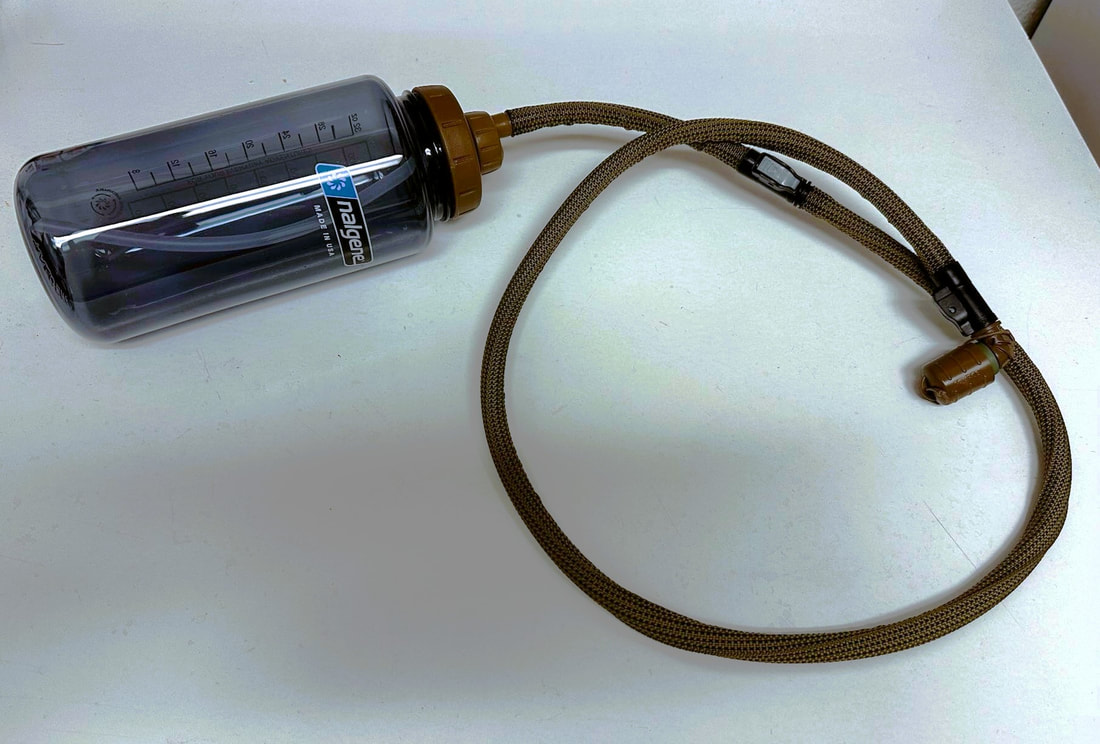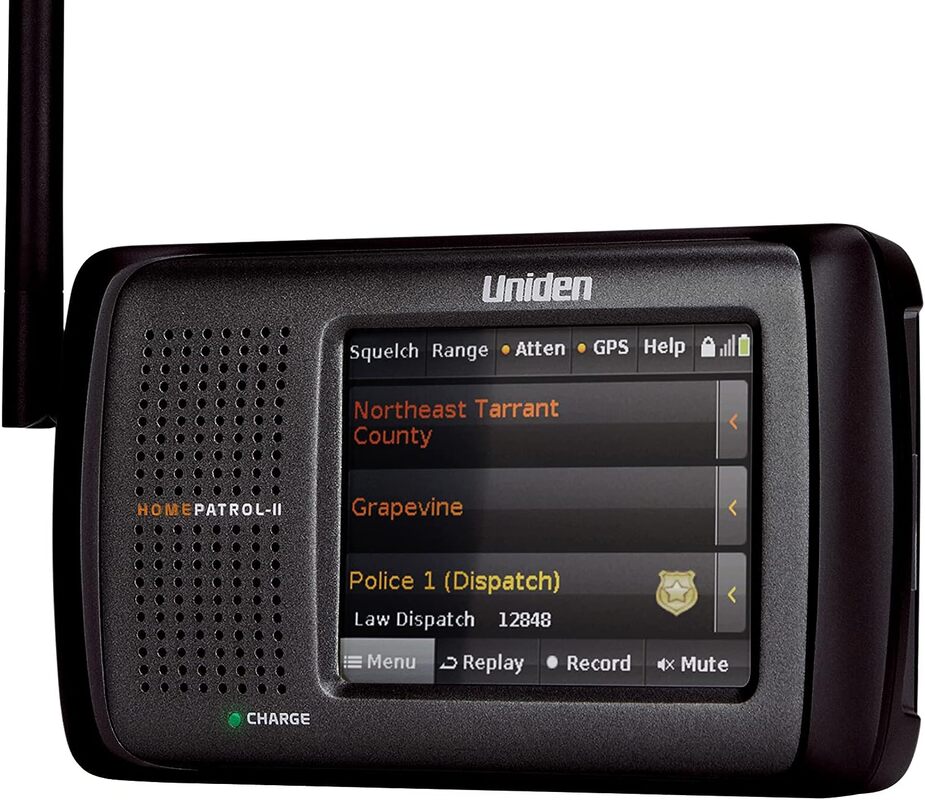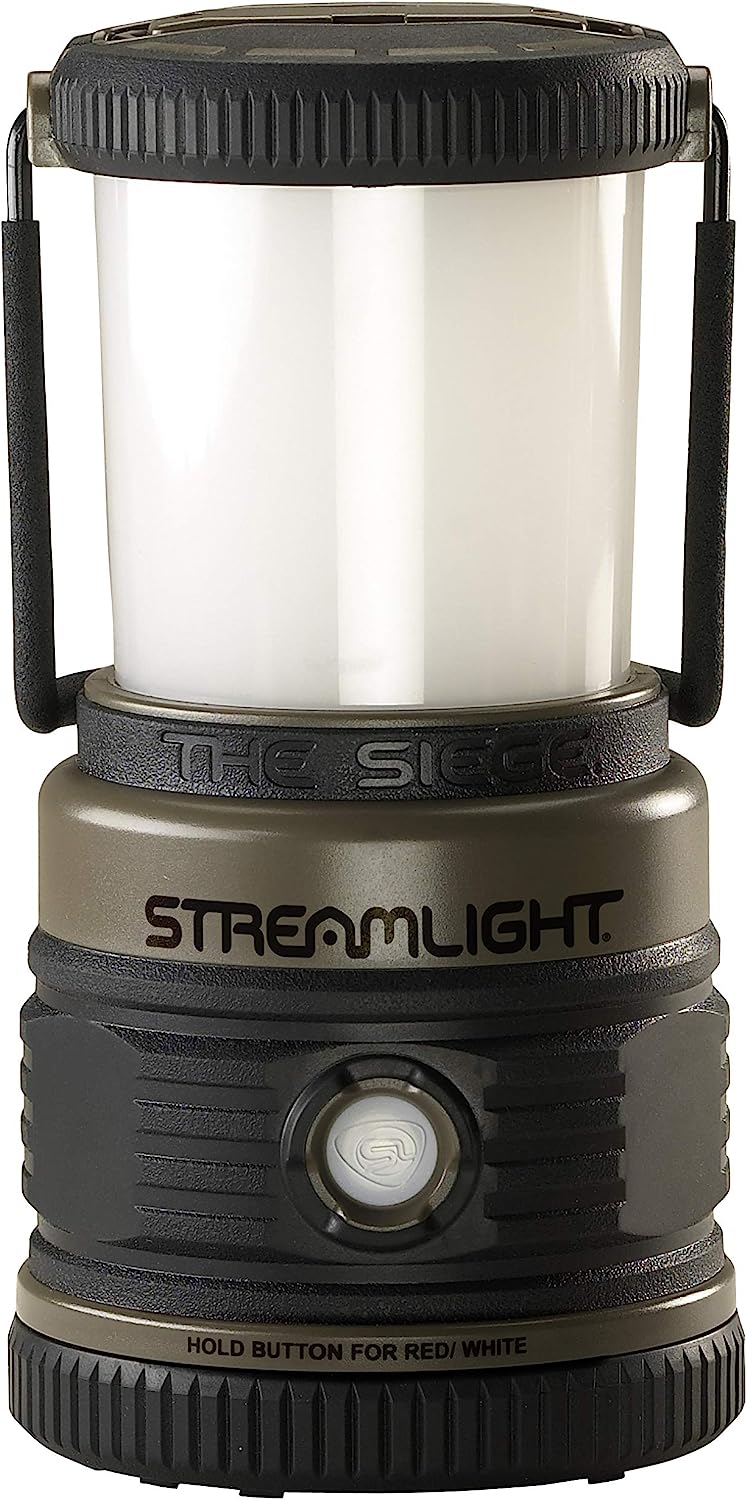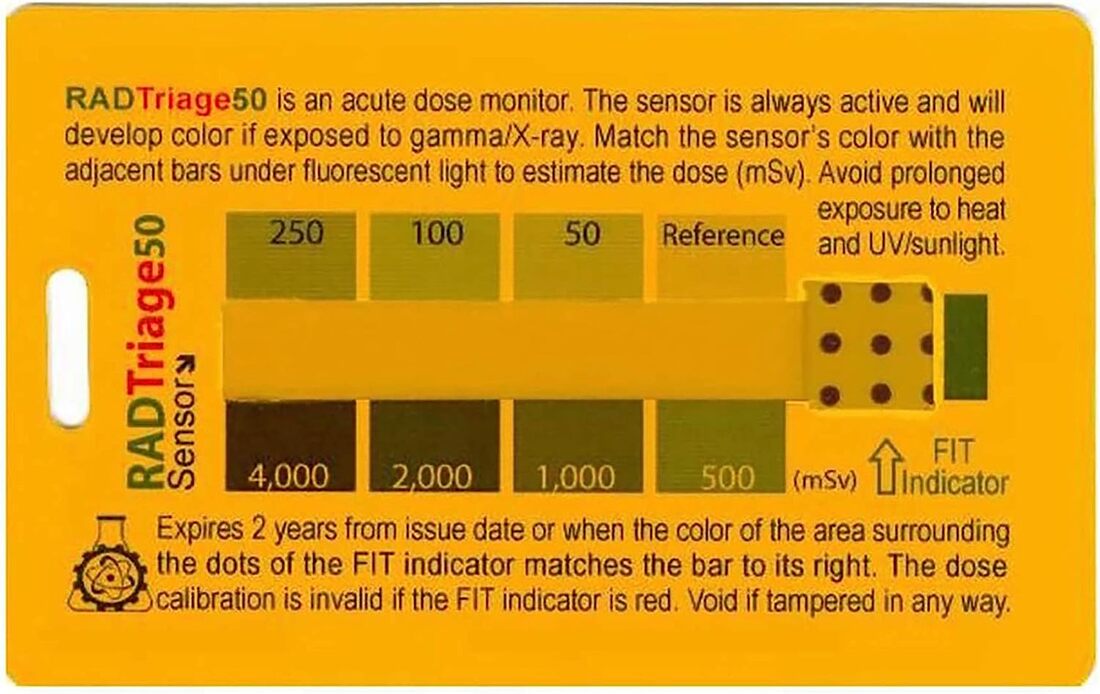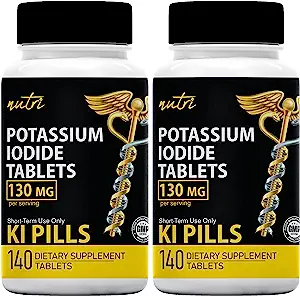|
Recently, I received the following email from a reader:
“In Limited Exchange Carson used a Victoreen Geiger counter. The only Victoreens I can find are of questionable quality on eBay. Do you have a suggestion for any other radiation meter that I could purchase?” I replied that I didn’t have any specific recommendations, but I explained that I chose the old yellow Civil Defense (CD) Victoreen detectors because they were quite ubiquitous during the Cold War and still are. They would be easy to source and it would not be difficult for my engineer characters to service and calibrate them. Modern devices are so much better, but they are expensive and it is difficult to find a modern equivalent to the CD meters. Why should you have radiation measuring equipment? There is no way to “gauge” radiation levels without instruments. That leaves a survivor at the mercy of local emergency services and the federal government/military to provide regional radiation levels. Many civil defense programs have been utterly gutted and focus on higher-probability, lower impact events such as tornados and floods. A nuclear war quite probably will leave you on your own for radiation readings. Individually, a personal radiation instrument can:
BLUF: Build your own (read on) or be prepared to shell out the big bucks. The selection on Amazon sucks and is nearly worthless. A really good condition and tested CD meter may be a good, affordable compromise. Basics Radiation detector is the proper term for what is often incorrectly or off-handedly called a “Geiger counter." A better term is radiation detector or radiation survey meter. These measure ionizing radiation as produced by a nuclear reaction (explosion or reactor). Electromagnetic radiation such as radio or microwaves are not a factor in this context. We will focus on the use of these detectors for post-nuclear war survival in a fallout environment particularly for those sheltering. The most dangerous phase of a fallout event is the acute (early) phase when the particles are falling down. Radiation is greatest in the first 48 hours, decreasing dramatically until the next major plateau stabilizes after about two-weeks. If local emergency authorities are intact, they will provide regional radiation readings but the continuity of emergency services or the specificity of these readings may be spotty. Individual measurement is the best way of knowing one’s radiation exposure. Anyone exposed to more than incidental global fallout would benefit from having a way to measure radiation while sheltering. An expedient Kearny Fallout Meter (KFM) can be made at home using common household items, but a purpose built detector will be more accurate, have additional features, and are not susceptible to human error in construction and calculation. Radiation detectors come in two types: survey meters and dosimeters. Survey meters are like a thermometer which is intended for an instant read and dosimeters are a measure of cumulative exposure over time like a rain gauge. Fallout produces three types of radiation: alpha, beta, and gamma. Alpha and beta radiation typically produce burns. Alpha radiation will be stopped by your skin or clothing. Beta radiation is a bit more powerful, but will not penetrate the walls of a typical home to any great degree. The danger these two present is from ingestion, so filtration of air, water, and careful cleaning of any contaminated food is the precaution for them. The most dangerous form of radiation (unless you eat fallout) is gamma radiation. This is what people are thinking of when they think of nuclear radiation. Gamma rays will penetrate all but the densest of materials easily. Eight-inches of lead or six feet of dirt is required to reduce the penetration of gamma rays to essentially negligible levels. Gamma radiation is what you are worried about. Not all devices will measure gamma radiation. A detector that only picks up alpha and/or beta radiation but not gamma will give dangerously low readings. The same problem will happen with meters that do not register high enough; .5 R/hr might not seem all that dangerous, but if that is as high as the meter will go, one could be in serious danger. The characteristic clicking sound that radiation detectors make in films are a result of ionizing events that are detected, that is, when a gamma particle passes through the detector. This causes a change in the electrical signal which is then used to produce a click through a speaker or headphones. The audible noise serves as a kind of warm/cold indicator. Count rate measurement (cpm or counts per minute) is mainly for alpha and beta radiation. A “count” doesn’t help you. A count is defined as the number of ionizing events. For survival needs, counts don’t help as they do not convert into dose rates. Dose, represented by Roentgens (R) or Sieverts (Sv), indicates how much radiation is present in a form that can be interpretated as risk to human life. A dose indicator is like a thermometer. I recommend Roentgens because a Sievert equals 100 REM (Roentgen Equivalent Man) and use R/hr because the differences between REM and RAD (Roentgen Absorbed Dose) are minimal. R/hr is also how old Civil Defense publications will read as well so it eliminates the need for conversion. Note that μSv (or uSv) is a micro-Sievert, or one-one thousandth of a micro-Sievert (mSv), one-one thousandth of a Sievert. 1 μSv is equivalent to one-ten thousandth (.0001) R and 1 mSv is one-one tenth (.1) of an R. A Sievert is the rough equivalent of 100 R. The “Geiger counter” is not what most devices are today, though they may incorporate that technology. Geiger-Mueller tubes can be saturated by high levels of radiation which may lead to an erroneous conclusion that the radiation is lower than it actually is. Radiation detectors that measure higher ranges of gamma radiation use alternate technologies such as different types of gaseous ionization chambers or scintillation counters.
Civil Defense meters
Civil Defense (CD) yellow radiation detectors were made for various purposes. Victoreen was the most prolific manufacturer of radiation detectors in the early days of the Atomic Era. Many of these models were sold by FEMA as surplus in the late 1990s and can be commonly found for sale in various states of appearance, repair, and precision. The V-700 was intended for low-level radiation, such as an accident, contamination, or a long time after a fallout event. These were Geiger tube only designs. The V-700 is particularly susceptible to saturation of high radiation and would be worthless in a heavy fallout environment that a nearby nuclear explosion would produce. The V-700s are best suited for detecting alpha and beta radiation giving them little utility to a survivor. The V-715 is the most common model available today, followed by the V-717 and V-720. They are capable of measuring radiation between 0.1 R/h and 500 R/h using four scales (multipliers): ×0.1, ×1, ×10, and ×100. The V-717 model came with a remote probe and anti-contamination bag that could be placed outside a fallout shelter to provide the outside radiation level without leaving safety. The V-720 has a moveable shield on the bottom that can be slid open for measuring the beta radiation level as they cannot penetrate the steel case as gamma rays can. Can you use old Civil Defense meters? Yes, as long as they have been refurbished and calibrated by a competent source. For this, you will need to check the reviews and qualifications of the seller carefully. These are mechanical devices which, as long as they are in good working order, should function just fine with fresh batteries. Kearny Fallout Meter (KFM)
Noted nuclear survival author Cresson Kearny had an important caution that some meters might under-read high levels of radiation. He actually summarizes this article and his 1987 advice is frighteningly contemporary even today, 35 years later. This is why he recommends his own meter, the KFM. See also: Nuclear War Survival Skills
Neither calibration against a radiation source or tuning should be performed by an end-user who does not have specific knowledge, experience, or training doing this kind of thing. Drift of the gauge may occur over time and can be adjusted by the means of a screw inside the case. The “check source” of lightly radioactive material has well passed its half-life and cannot be assumed to be accurate. If you really expect to need to use your radiation detector, an incorrect reading may get you killed in one of the most horrible ways possible. V-715 has the least features of all the high-range CD detectors. Additionally, unmodified V-715s can have issues with losing calibration. Models with an “R” marking indicating a retrofit are much more reliable. Non-R marked V-715s should not be used, even if the seller claims that they have been rebuilt or refurbished. Non-Victoreen brand models should not be used. The V-715 includes a remote probe and a 25 foot cable that can be placed outside a shelter for remote radiation monitoring. It can also be used as a general survey meter, making it perhaps the most useful CD detector. The V-720 is considered generally reliable although the beta measurement capability may not be a factor for most users. The V-740 dosimeters are rare due to electrical leaks and failing accuracy tests. They were superseded by V-742 dosimeters and also the most common. It is necessary to buy a charger in order to use CD dosimeters. These chargers are original, special equipment and charging is not like how we would charge a phone or something similar. Should you use a 60 year old instrument? Your life may depend on this device, so why not get something that is guaranteed to be reliable and accurate? Old CD detectors don’t have return policies where you can just take them back to the Eisenhower Administration and get a new one. Modern designs include features like a digital readout, self-diagnostics, superior battery life, increased accuracy, alarm functions, and a smaller size. To answer the question, not if you can afford a modern one; affordability being the key. Wherein the problem lies with price and availability. Since the customers for these devices are industrial or government, prices are on a “quoted” basis and several hundred to thousands of dollars. Someone with the money may want to make an investment otherwise for persons of average income, a quality CD detector is probably the best purchase. Survey Meters, Dosimeters, and Alarms
Survey meter
Survey meters are generally handheld and may include remote probes. These detect surface contamination and background radiation in an instant-read method like a thermometer. The above section on the CD V-series is a good explanation of what a civilian survey meter should include. Desired features:
Do not buy an “EMF meter” or one for electromagnetic radiation; these are either ghost hunting tools or measuring things like radio or microwaves. You are measuring ionizing radiation. These tools are worthless for a nuclear war. Dosimeter A dosimeter measures personal exposure to radiation, sort of like a “sunburn detector” if there were such a thing. Damage to the body from radiation exposure is cumulative. Damage done by very small doses over time can be repaired by the body but as the dose increases, the chances of a damaged cell becoming malignant and causing cancer or other serious injury rise. These are individually worn passive devices. They do not provide an immediate reading of the radiation level making them useless to determine the radiation danger until after exposure has occurred. Some models allow for the wearer to see a real-time reading of the accumulated exposure. Only modern electronic dosimeters can provide helpful real-time information. Dosimeters are useful for knowing how much radiation you’ve been exposed to, especially in environments where conditions and radiation levels vary or are unexpected, making measurement difficult. These are most often found being used by emergency personnel or those who work around nuclear materials. Normal occupational rules prohibit exposure of more than 5R/500mSv which would prompt someone to be pulled out of danger before serious radiation injuries could occur. In a post-nuclear war environment, levels for emergency workers performing absolutely critical emergency work (i.e. rescue) in radioactive environments can be as high as 30R. Sources of contamination may vary wildly when out and about, so a live-read dosimeter is critical for knowing when they need to get to safety. For survivors, a dosimeter may be helpful but not necessary. Those sheltering will have relatively static rates of exposure and if they have a log of accurate readings individual dosage can be calculated. Dosimeters worn by radiation workers in nuclear power plants measure the whole body dose. These are usually clipped to clothing and provide a digital readout of the cumulative dosage received and may have an alarm for dangerous levels of radiation. Digital electric models typically use MOSFET transistors to measure the radiation level. The oldest dosimeter technology is the film strip badge that does not provide a reading in real time and requires the film to be developed which is where much of the cautions come from. Older CD pen-style dosimeters (pocket ionization chamber) used a quartz fiber that would take its measurement from the change in static electricity held on the fiber. These require charging before use. Electrostatic repulsion of gamma rays ionizing the gas in the fiber chamber causes the fiber to become straight, which in turn moves the gauge. This is the same principle by which the Kearny Fallout Meter operates on. Other detectors include thermoluminescence. These are composed of a crystal matrix of elements that when exposed to radiation trap the radiation and release it was light. The light released is proportional the radiation intensity which allows the exposure to be accurately calculated. Electronic devices measure the light being released while non-electric devices have strips that change color, like an instant-developing film badge. Electronic Personal Dosimeter (EPD) Modern electronic dosimeters are best and most can take instant readings of the ambient radiation level (like a survey meter) in addition to recording the cumulative dose. Some may include high radiation alarms. Preventive models are used in scientific or energy settings where radiation exposure is planned. These models are primarily administrative in nature and not designed for high radiation environments. If a nuclear worker’s dosimeter alarm sounds, it’s time to leave. Personal Emergency Radiation Detector (PERD) Emergency models are like the EPDs above, but are made for first responders and are thus more robust. PERDs are appropriate for use in much higher exposure rates, and have variable settings for different response zones (Cold, Hot, and Dangerous Zones). They are specially designed to avoid oversaturation effects. HAZMAT and nuclear response teams use these devices as their work will expose them to level of radiation where a scientist or engineer would simply evacuate away from. Affordable non-alarming PERDs are like film badges but are instantly readable. One such is the RADTriage Model50 Personal Radiation Detector is a credit card sized dosimeter that uses a color-coded matrix to provide visual indication of radiation exposure. Measurements are approximate and insensitive to lower levels of radiation. Their main advantage is their small size, robust nature, lack of batteries, and cheap cost. The above only measures medically significant doses: 50-4,000 mSv (5-400 R/.5-4 Sv), making it suitable for a nuclear fallout environment. Additionally, it boasts a 2-10 year shelf-life (extension possible in freezer) and does not require batteries or calibration. It measures cumulative doses; the more radiation it receives, the higher it will indicate until the maximum is reached. It cannot be zeroed for reuse, however. They have been used in the real world in Japan during the Fukushima nuclear disaster.
Radiation alarms
Radiation alarms will sound if radiation is detected. These are called Personal radiation detectors (PRDs). While they look like dosimeters, they are not. These generally only indicate the presence of radioactive sources and are intended for low-levels of radiation. Their occupational use is in detection of radiological leaks, nuclear terrorism, or regulatory control by law enforcement or customs officials. Consumer devices like NukeAlert™ are simplified to alert when radiation is detected. A radiation alarm would be useful in situations where, such as after an EMP, there is no way to receive official warning of fallout arrival. Radiation alarms work by detecting the mere presence of ionizing radiation. There either is no radiation or there is—many do not provide a reading or if they do it can be quickly saturated by heavy radiation. Again, you wouldn’t buy a thermometer that only gives a reading of “yes” if you wanted to know the specific temperature. Occupational models, in fact many of them on the market, are intended for laboratory, regulatory, police, medical, or energy-sector use. Their warning levels and readouts are much too low for fallout situations other than indicating that a radiation emergency is occurring. A radiation alarm may be useful if you expect to have no other warning of fallout arrival or do not want to take routine surveys after a nuclear attack. What Should I Buy?
Virtually all of the radiation detectors and dosimeters sold on Amazon are too low for practical use in a nuclear fallout environment. You will need to source your high-rate detectors elsewhere. Frankly, most of Amazon’s “Geiger counter” products are the same Chinese crap ad infinitum. For low levels of radioactivity, they may be fine but they are not what you should be relying on after a nuclear war. The dosimeters, depending on the actual reviews and field performance, may be okay. I would buy one to test out before outfitting the family.
Low-rate survey meters and dosimeters are intended for industrial settings where any radiation above normal background rates is an emergency calling for evacuation. For the average person, these are a mere curiosity unless you are traveling to Chernobyl or Fukushima. The low-rate dosimeters may be acceptable in a well-protected shelter where the cumulative dose is expected to be lower than 5-10 R. Again, 5 R is the yearly limit for radiation workers in the United States and is a good gauge of an acceptable risk level. Note that if a product advertises a 1000 mR/hr, that isn’t much, only 1 R. The selection of radiation detectors on the market for post-fallout events is poor. The majority of the market is aimed at routine monitoring and regulatory compliance, not emergency management. There does not seem to be an easy to find, cheap analogue to the CD V-series. The dearth of nuclear war tailored devices seems to be a product of market forces than anything else. It is more profitable to make and sell devices for routine radiation work than a contingency niche product. A Kearny Fallout Meter (KFM) is affordable and effective, but it is not suited to low-levels of radiation that a post-war world years and decades down the line will present. It's also not authoritative and many ignorant people will have a hard time believing a home-build device can actually measure radiation. A combination of a KFM could be used while the radiation is high and a relatively cheap 5-10 R device used when the sheltering period is over (and the radiation is lower). If you plan on building a KFM, consider building a practice model in peacetime and purchasing a gamma check source to calibrate it yourself. Watch this video on the KFM including construction. The most cost-effective radiation detectors (survey meters, in particular) on the market are the old Civil Defense products. Take the time to research the CD Victoreen V-series meters. Don’t just buy one sight unseen off Ebay Carefully vet the seller and their refurbishment/calibration process. Read the reviews and purchase a check source to verify accuracy yourself. KI4U (www.ki4u.com) is one such well reviewed supplier. Personally, I will be building a KFM. The KFM will be used as a gross radiation monitor as I feel I only need to know about the radiation levels within its range. This will be supplemented with colorimetric dosimeters. If I was building a shelter, I would find a very good condition, calibrated and refurbished V-717 to place the probe outside the shelter. If I expected to have no warning of a fallout event (such as no news or radio warnings), I would get a radiation alarm to trigger at the first arrival of radioactive fallout. Models A brief selection of various models, mostly for informative purposes to show what’s on the market, follows. Low rate Low-rate dosimeter (5 rem) https://amzn.to/3FAYr5x Low-rate PERD 10 R https://amzn.to/3j5Fn7N 50-100 R https://amzn.to/3uUkS0x Note that most of the products sold on Amazon are for very low radiation levels and will be of very limited use in a fallout scenario. They may have utility months or years later when the radiation level has fallen dramatically. High range This one claims to server as a dosimeter of up to 9,999 Sv, but that seems too good to be true. https://amzn.to/3YpQHvD. And here’s another https://amzn.to/3Wd2OdI. This dosimeter promises up to 99,990 R or 999 Sieverts. https://amzn.to/3Py5BvH High rate dosimeter (up to 1000 R—10 R/hr metering capability) https://readymaderesources.com/product/rds-31-survey-meter-free-shipping/ High rate personal meter, 300 Rem https://www.thermofisher.com/order/catalog/product/425067675?SID=srch-srp-425067675 Survey meter, 100 R/hr https://www.thermofisher.com/order/catalog/product/4254002 Survey meter, with a pole http://radsafety.teal-server.com/product/telepole-ii Up to 100 R https://www.drct.com/dss/Technical-Associates/tbm-icm-v.html Up to 50 R https://www.flukebiomedical.com/products/radiation-measurement/radiation-safety/451b-ion-chamber-survey-meter-beta-slide Up to 9,999 R/hr https://www.berkeleynucleonics.com/dsm-500 Probable Nuclear Target Map (USA)
First off, targets and locations are approximate, especially for urban areas. Targets have been picked on what I’d feel uncomfortable about, so don’t harangue me over not having picked the Hoover or Grand Coulee dams. This is not based off any specific number of warheads exchange or a certain scenario. Keep in mind that not every target can be hit. China only has 200-300 weapons as of 2022. The US and Russia have about 1,200 weapons each that can be deployed. Probably only 500 warheads would be used if everyone is telling the truth. A second strike capability needs to reserve some warheads for a second attack and more still will be needed to serve as a deterrent after the war. That means that there is probably just enough to hit the missile fields, major military command facilities, and major cities. This is my map based off my own assumptions. Counter-value vs. counter-force Counter-force targeting is using nukes against the enemy’s nuclear forces to try and take them out. That is launching missiles against bomber bases and missile silos. This will take up a lot of warheads and carries a low chance of success. Probably by the time the warheads have arrived, the planes have scrambled and the silos are empty, wasting the missiles. We can’t know how many weapons are targeted for such a mission in any case. Counter-value targeting is attacking population centers; i.e. cities. Killing a huge majority of a country’s population in the span of an hour should be a powerful disincentive to going nuclear. It is believed that Russia and China use this strategy; the US almost certainly has such plans as well. If not hit in a first strike, civilians are hostages against a second strike if only military targets are attacked in the first wave. Counter-value targeting makes a lot of sense for China in particular because they have only, at max 300 warheads as of 2022. Some must be held in reserve so it would make sense for them to launch say 100-150 warheads against major US cities. Those who live in metro areas (yellow shaded areas on the map) should assume they are in danger. Cities would almost certainly be targeted by airbursts. This would be like a giant’s foot stomping down on the city and starting fires as well. Radiation would be limited and no fallout is expected. Even without fallout, the initial blast and follow-on effects of injuries, fire, chaos, and poor to no medical care will kill millions. Fallout and missile silos Ground (or surface) bursts are warheads that detonate just above or at (or even below) ground level. These are intended to crater the ground to destroy hardened bunkers and silos. Missile silos will take at least one ground burst in a counter-force strike. This will kick up tons of earth into the air which will become fallout. Fallout will be most deadly within 10-50 miles of ground zero and less dangerous further away as the concentration and intensity falls off with distance. \ However, large amounts of fallout from the missile fields in Montana, Wyoming, Colorado, Nebraska, and North Dakotas. This will affect the areas to the east and northeast (Canada) predominately, possibly blowing as far as the Upper Midwest or Eastern Seaboard. Individual detonations can be simulated but the overall effect of hundreds of detonations is harder to predict. In this respect, old 1960s-era fallout maps are a good predictor of danger. I would caution everyone that old 1960s-era maps that are frequently circulated on the Internet are not accurate any longer. The same goes for old target maps. Missile bases and silos have been dramatically reduced over the years. My map only includes active silos and bases. Old maps erroneously assume that cities will be hit with ground bursts and put way too much fallout in their representations. If you do not live near a nuclear weapons storage area, near a command bunker of some sort, or within a hundred miles of the missile fields, fallout should not be a major concern for you. Note that the fallout danger areas I created as very rough and just an approximation of likely areas of major concern based on prevailing wind patterns. Urban areas Urban areas were picked for major metro areas and cities with populations generally greater than or about 250k. Whole metro areas were marked off as well. I would also be concerned if I lived in a state capitol of 100k or so. Urban risk areas for counter-value strikes (nuclear carpet bombing) are marked off in yellow shading. These limits are approximate and generalized to represent the metro areas. Warheads are likely targeted on downtown areas as the population is most concentrated there. The area of destruction for airbursts will also be circular in nature so irregular polygons are only representative of the danger area. It’s up to you to figure out if you live in a high danger zone. But for example, using the LA area, someone living in downtown LA will probably die while a person in northwest Santa Monica won’t. Someone in Acton probably won’t feel more than a slight shudder. Use those generalizations and sources like Nuke Map to rate your risk. Military bases Most major military bases are included on this map, however, this does not endorse them as potential nuclear targets. If I feel that they are high risk locations, I’ve noted them as such. Particularly high on the list are strategic nuclear forces bases; the fleet ballistic submarine bases (SSBNs) and the bomber/missile bases. Any base with a nuclear weapon storage area is at high risk for ground bursts to destroy the hardened bunkers. Note that some bases also have smaller bunkers in hangers for rapid deployment. Command and control bunkers are also major targets; this is a danger for Colorado Springs, Omaha, and the Washington DC/Maryland/Mid-Atlantic region. There will be a lot of ground burst warheads trying to destroy the bunkers that the military and government will be sheltering in. Those three cities can probably be written off between blast effects and fallout. Airbursts over most military bases will destroy them and kill the personnel, thus rendering them non-mission capable. The soil of an Army base does not need dug up to take it out of the fight. The same for airfields and navy bases. Be wary of any submarine bases as a damaged reactor will probably suffer and uncontained meltdown. Frankly, I expect that a lot of Army bases will actually survive because the damage done and the troops killed will be relatively minimal. Wrecking our ability to wage war and ship troops overseas is probably a better investment of the warheads than nuking some pilot training airfield or an Army maneuver area. What this means for you First, if you don’t live near a target and outside of an urban area, you’ll probably survive the nuclear exchange. Fallout won’t be an issue that everyone makes it out to be unless you’re downwind of something really dangerous, like NORAD or the missile fields. Carefully research the probability of attack. Map the weapon effects using something like Nuke Map and see if you are out of the blast area. If you’re really lost feel free to email me for an opinion. Don’t forget to support my work and buy my book Nuclear Survival in the Suburbs (non-fiction) which explains targeting and survival tips. Also check out my webpage on nuclear survival.
Note: This contains an excerpt from Nuclear Survival in the Suburbs.
Iodide is a necessary element involved in the regulation of the thyroid gland. Humans obtain this nutrient from the foods that we eat, including iodized salt. The thyroid will readily absorb any iodide it encounters as it is unable to differentiate radioactive iodide or not. Potassium iodide (KI) is advertised as a “nuke pill.” It is not an antidote for radiation; no such thing exists. Potassium iodide blocks the uptake of radioactive iodide into the thyroid by filling up the gland with harmless iodide. The thyroid, so filled, cannot absorb any significant quantity of radioactive iodide. This will lessen the chance of thyroid cancer and cannot protect the body in any other way from radiation. This is most important in young children, infants, breastfeeding and pregnant mothers. Those over 40 years old generally do not need to, or should, take potassium iodide as they are more likely to have an allergic reaction and have the lowest chance of developing cancer or a thyroid injury. Some people may be allergic to iodide and should not take the pills. Potassium iodide should only be taken in a radiological emergency, such as in an area contaminated with fallout after a nuclear war. Authorities and public health officials may distribute the pills and will advise when the medication should be taken. Dosages on the package or announced by public health personnel should be followed. Iodized salt is not a substitute for the pills. If purchasing pills for preparedness, this should be done well in advance of any nuclear crisis as supplies may be easily exhausted by panic buying. Please do not rush out and buy KI just because. It may make some people ill who have an allergy to it. Also please note it is not a radiation cure-all. Other drugs: If you need other drugs, like Nplate (intended to help with low platelet counts), you are going to probably die. Medical care after a nuclear war will be overwhelmed and radiation sickness severe enough to require prescription drugs. Many serious radiation sickness patients will only be given palliative care. “Will airports with runways long enough to support B-52s be targeted for airbursts or surface bursts during a nuclear war?” I got this question on Twitter and it bears deeper examination. Now do I know? I don't. I gather the truth is top secret or самый секрет, however, we can infer some answers. There are two questions though: 1. Will large airports be nuked? and 2. Will it be a ground or airburst? What the question refers to is a practice called bomber dispersal, which is largely a 1950s-1960s practice. In advance of a possible nuclear war, Strategic Air Command (SAC) could spread its bombers out across the country to airports with long runways, say 10,000 feet. This dramatically increases the number of possible targets the Russians would have to hit in a first-strike to disable America’s bomber force. We have to remember that America was behind the curve with ICBMs. Russia got their first, although we caught up. B-52s were our deterrent and first strike weapon. This is why missions like Operation Chrome Dome were flown were a portion of the bombers remained airborne at all times, even in peace, with live nuclear weapons ready to go. If a surprise attack caught us off guard, bombers above the Arctic would be given the go-codes to fly the rest of the way. This is what’s going on in Dr Strangelove and Fail Safe. Ordinarily B-52s were at their regular bases, like Minot AFB in North Dakota. Some sat on strip alert on sections of the apron that was called “the Christmas tree” due to it’s shape. These bombers were fueled, bombed up, and ready to go. In a real crisis, the whole fleet would probably be similarly primed. This is where dispersal comes in. Spreading your planes around makes them harder to kill. Any infantryman will tell you to stand five meters away from each other so one grenade can’t easily kill multiple people. Dispersal also makes your enemy spend money on building more bombs, delivery systems, and intelligence. The enemy has to target all possible runways or know for certain that no planes are there. Dispersal makes a nuclear attack more of a guessing game. That guessing game was largely solved by the advent of satellite reconnaissance. Though real time satellites came after bombers were relegated to the tertiary leg of the nuclear triad, being able to see that bombers are on the ground at San Francisco International (SFO) and aiming your missiles there takes away the guesswork. The movement to missiles also changed this. A missile can hit a target in 30 minutes (give or take), so why would you use a bomber if you didn’t have to? In today’s age, a dude with binoculars could just make a phone call to Beijing or Moscow if he sees a B-52 land at a civilian airport. Bombers became an insurance policy and a flexible option while ICBMs and SLBMs were the real deterrent weapons. Targeting therefore moves from bomber bases and runways to missile silos. Warheads are a finite thing and countries can’t just nuke whatever might be used against them. Current nuclear warhead inventories are about 1,200 for the US and Russia and 200-300 for China. A realistic US/Russia nuclear WWIII is a 500 warhead scenario (you have to hold some in reserve). A country can’t nuke long runways and all the other locations it needs to. There are command bunkers, major military bases, missile silos, and cities that need hit. The scary thing is military targets and missile silos are probably less likely to be hit than cities. Russia and China are believed to employ a counter-value strategy where they nuke cities to kill civilians instead of a counter-force strike against missile silos that will probably be empty. The idea is no politician wants to start a nuclear war if 50 million of his citizens will die an hour later. Anyone living in a major urban area is a literal hostage. So why nuke the runway if the bombers are already likely to be gone, if they were ever there? Those who live near a major airport need not fear being nuked, at least for this reason. The technical sideWhy is the questioner so focused on air vs. ground bursts? Ground bursts explode at or near ground level. They dig up a lot of earth and debris which becomes fallout. Fallout, over time, will kill more people via radiation over a larger area than the bomb alone. Ground bursts are done to put holes in the ground, such as making craters or destroying a deep bunker. Airbursts produce effectively zero fallout because there is nothing for them to irradiate besides the bomb itself, perhaps a plane or two, and some birds. The danger from an airburst is the thermal radiation (fires) and the blast wave. A nuclear weapon is just a big bomb and what doesn’t catch on fire will be stomped by a massive pressure wave worse than any tornado or hurricane. That is what turned Hiroshima to matchsticks. For ground bursts on a runway it’s likely a waste of destructive energy. You don’t need to dig a hole in the middle of an international airport to render it unusable. An airburst will go full Godzilla on anything beneath it, especially directly beneath it. Effects on pavement for airbursts seem to be nil. Hiroshima and Nagasaki were hit by 15-25kt blasts (depending on the source) and their roads below ground zero were fine. According to Alex Wellerstein’s Nuke Map, a 150kt warhead detonated at approximately 3,000 feet could create a crater 150 feet deep and nearly a quarter-mile across. SFO is toast and this is still an airburst that is unlikely to cause fallout. Now international runways are concrete that is several feet thick so the actual results would vary, but it does seem to be possible to physically damage a runway beyond repair without a surface burst. (note that Nuke Map shows the same result for 20psi optimized airburst as it does for a surface burst, so take it with a grain of salt; his tool is the best we have). If an airburst occurs higher to maximize the destruction by spreading it over a greater area, the overpressure will be lower on the ground, meaning less intense damage. Nevertheless even 1psi will ruin your day. Imagine a nuclear weapon obliterating an airport. Debris will be everywhere. An airplane cannot land or takeoff from a debris choked runway where the pavement might be melted and everything around is burning. Even a more distant explosion poses hazards. Any debris that gets on the runway is a danger to planes. Foreign Object Damage (FOD) is a very big deal; aircraft carrier deck crews know all about this. Sweeping runways to keep them clean is a major part of airport maintenance. If a city gets nuked, chances are its airport will have some form of debris on the runway rendering it unusable. A nuclear war will also make the airport unusable for other reasons. EMP will destroy communications so normal flight operations are out. Navigation aids will be destroyed. Most importantly staff may be dead or can’t/won’t come to work. It is not beyond the realm of possibility that enemy special forces with lasers and surface-to-air missile launchers might be lying in wait for a bomber scramble from a civilian airport or an Air Force base. Finally, the green rings in the images from the Nuke Map simulation represent radiation. This is not fallout but prompt radiation. A nuclear weapon airburst sends radiation out sorta like an x-ray machine irradiating the ground below it. The irradiated area (ground zero) is only dangerous if you enter it. The radiation will fade over time, but it will take eight days for the 500 rem zone to reduce in intensity for short trips, such as an emergency rescue, to be safe. An eight-hour work day on day eight is over the dose that a nuclear industry worker can get in an entire year. After a month, that limit is a few days. No one except the most dedicated rescue workers, for a few hours at best, are working on a radioactive runway. After a nuclear war even airmen would probably mutiny. So to answer the question directly: 1. It is unlikely long runways will be targeted, and 2. airbursts are more likely to enhance the collateral damage done beyond the airport. Those who live near major airports should be more worried about living in a major population center that will get nuked. If you live downwind of a major airport, I wouldn’t worry about fallout from a runway-cratering ground burst. Help support articles like this. Buy my book Nuclear Survival in the Suburbs and others.
(Originally published on SurvivalBlog.com) Several weeks ago, Reader L.E. asked how seeds would fare after a nuclear war. That got me researching about growing food after the nukes fly would be complicated. Turns out not much. After a nuclear war, fallout and higher radiation counts worldwide will be a fact of life. The remnants of the fallout will remain acutely in our food chain for a century. Consuming radionuclides (radioactive isotopes) will be unavoidable, but not as catastrophic as some think, and it can be mitigated. Fallout will not be a massive, universal phenomenon as some of the outdated fallout pattern maps from the 1960s show. Airburst weapons do not create any appreciable fallout and as cities are the likely targets, they will be destroyed by warheads detonating a few thousand feet above the city to maximize blast effects. Surface detonations are used against things like missile silos; so if you live near some, watch out. Fallout from surface blasts may travel long distances but will almost certainly be heavily localized near hardened military targets. Long distance fallout or worldwide fallout that is lofted high into the atmosphere will be a universal concern. This radiation will be much weaker as the particles are less dense and have been decaying while airborne. A real-life example is that of the Downwinders who were exposed to atomic testing in Nevada during the ‘50s and ‘60s. Fallout in food is an ingestion hazard of radionuclides (radioactive isotopes) through the food cycle. These radionuclides include isotopes of iodine, cesium, and strontium. Iodine is a short-term hazard whereas strontium and cesium, with their longer half-lives, are long-term hazards. Thyroid and other cancers are the primary pathology. Radioactive material can be ingested in two ways; consuming produce with fallout embedded in it or consuming produce that has absorbed an isotope from the soil. Isotopes Isotopes, or radionuclides, are the radioactive elements within the fallout particles. Decay can take months to lifetimes for many fallout products. Typically the life of an isotope or radionuclide is expressed in half-lives or how long it takes for a radioactive isotope to decay to half of its initial strength. Once the half-life passes, the isotope is still radioactive, but the strength of that radioactivity is considerably diminished. Some isotopes and their half-lives are: Iodine: 22 hour half-life (-133) and 8 days (-131), which is hazardous up to 60 days. Cesium-137: 30 year half-life. Strontium: -90 has a 29 year half-life; -89 has a 53 day half-life. Iodine can be mitigated by taking potassium iodide (KI) supplements to fill the thyroid with good iodine. Due to strontium’s similarity to calcium, children are at special risk of exposure as the body will absorb and deposit it in the bones like the calcium their growing bodies need. The body does tend to naturally discriminate against strontium in favor of calcium and this acts to reduce the amount of the isotope that is absorbed. Direct contact Direct contact contamination is when fallout lands on the food and get stuck into it. Unlike a tin can with fallout sitting on top, you can’t as easily remove fallout from a piece of produce. Fallout can land on plants or be blown into it. It is the same mechanism that allows dust and dirt to get into fruits and vegetables; think of gritty spinach. These embedded pieces of fallout grit are what emit the radiation. Remove the grit; remove the radiation. A decontaminated fruit will not be radioactive just because it sat outside in fallout or got covered in radioactive dust. This kind of contamination will be the most prevalent immediately after the nuclear exchange especially downwind of ground detonations. Plants that are “dusted” with fallout should be rinsed or brushed off (if they cannot be harvested) to prevent the particles from entering the plant. Leeching from rain or irrigation water is a potential issue if particles are allowed to sit. Immature plants and fruits may continue to grow around the particle, embedding it into its flesh. This is a particular danger to livestock that are grazing on contaminated grasses that can’t feasibly be washed off. Uptake from the soil Fallout that lands on the ground will over time (months to years) be taken up by plant life, working its way into the food chain. Plants take in the radioactive particles from the soil the same way they absorb nutrients. Unfortunately many of the radionuclides are absorbed by living organisms, plant and animal, like necessary nutrients are. The isotopes are then distributed throughout the plant as it grows. Because the radionuclides are now actually incorporated into the plant itself, it cannot be decontaminated. Humans are affected by this as they eat produce from gardens and farms. Strontium is present in that spinach just as calcium is. Animals who eat contaminated feed or forage will also be affected likewise. As animal products like milk or cheese and their meat is eaten by humans, the contamination will also be transmitted on. Gardening tips Gardening after a nuclear war requires no special techniques to raise or care for the plants. A gardener can use all the normal and traditional methods. More care may be required due to adverse conditions because of radiation effects, lack of water, or nutrient depletion due to soil remediation. Plant stresses from radiation will be similar to the stress from any other environmental effect. Plants, fruits, and vegetables that have been visibly damaged by radiation (wilted, browning, or have holes) are relatively safe to eat if any surface contamination is removed. Even produce that has incorporated radionuclides into itself like a nutrient is relatively safe to eat. Starvation is a sure killer while an elevated cancer risk is over decades. It is best if plants can be harvested before fallout arrival though one should not place themselves in danger to do it. One should never risk their safety to attempt a harvest during fallout or until it is safe to work outside again. Plants may not be ready for harvest until after the critical fallout phase. These should be harvested when ripe and decontaminated. Root vegetables like potatoes will require extra cleaning to remove all dirt when grown in or pulled from contaminated soil. Skin should not be eaten but peeled off. When cutting or peeling fruits or vegetables, avoid letting contaminated outer skin or parts touch the inner surface. Knives or peelers should be rinsed between cuts to avoid introducing contamination from the blade to the inner flesh. Produce like apples, head lettuce, and cabbage can be virtually totally decontaminated (from surface contamination) by through and repeated washings, pairings, and cuttings. Peas, beans, and corn can be shelled or husked to remove surface contamination. There is no decontamination from absorbed radionuclides. Compared to humans and animals, plants are remarkably resistant to radiation. Levels that will kill a man in days or hours is not much to a plant. Wheat can be killed at 4,000 R (Roentgens) and 1,000 R reduced yield by half when exposed at the seedling stage. This level of radiation would be expected within tens of miles of Midwestern missile fields, for example. Fatally exposed plants may take several weeks to show effects and die. Lethal dosage will appear symptomatically as rapid, premature aging and wilting. Non-lethal high doses may impair growth or have an effect similar to weather extremes; heat, cold, drought, pests, etc. Surviving crops will have decreased yields meaning more will need to be planted and cultivated than before. Mutations and plant damage can occur at lower doses. Young plants that are in an active growth phase may be affected because their cells are rapidly dividing. Soil decontamination is generally not advised. Radioactive hot spots should be avoided. Except for strontium-90, most isotopes will decay too quickly to make long-term contamination an issue. Deep plowing where the contaminated soil is buried under at least 18” inches can reduce strontium contamination by up to half for shallow rooted crops. For most gardeners (versus farmers) it would probably be more realistic to remove any hot spots in the top two inches of soil instead. Planting of fallout contaminated land may be necessary. Excessively radioactive hot spots, such as where runoff water ponds, should be avoided. Lime is used in acidic soils to make more calcium available to the plants and can reduce strontium uptake to up to half. Neutral soils are the best as alkaline soils tend to maximize radionuclide absorption. Phytoremediation, where non-edible crops are used to deliberately take up radiation and then are discarded, may take generations. As Reader L. E. asked, your seeds should be fine. Seeds are relatively impervious to nuclear radiation at levels expected from radioactive fallout. Radioactive accumulation in seeds is far less than in leaves. Harm to seed germination is not expected at radiation levels that are not high enough basically to outright kill the owner of the seeds. Radiation resistance is variable based on the type of plant and the species. In conclusion, the bottom line is that radiation in your food will be the least of your worries. Most Americans probably won’t have much fallout to deal with, but little bits of it working its way into food over the years will be inevitable. Those who do need to worry are folks who get the remains of missile silos or bunkers raining down on them or have the unfortunate experience of living in a freak fallout hot spot. Note: This article contains adaptations taken from my book, Nuclear Survival in the Suburbs. See also: Nuclear Survival in the Suburbs I received an email from a nuclear engineer that better clarified the issues and difficulties in employing the inverse square law. The engineer who was kind enough to write me in response to my article did a wonderful job of explaining the caveats better than I did. His information was more informative and expansive than the engineer I consulted with previously to establish the background of my post and book.
He cautions that the radiation dose reduction from planar sources, like the fallout contaminated ground and surfaces outside, does not fall directly according to the inverse square law. The rate will still decrease, but will be higher than the inverse square law would otherwise predict. “With (approximately) five planar sources facing the occupants, reductions by moving from one side to the other are important, but will not fall of with the inverse square of the distance. (Dose rates from hot spots will approximate the inverse square law, but locating them may not be easy or even possible for most people.)” The varying properties of plane sources appears related to exactly how the radioactive material is deposited. As cautioned in my post, and further in my book, how the fallout lands, the layout of the house, and hot spots will complicate any “neat” computations. In fact, for most citizens measuring radiation would be impossible, making the actual level ill-relevant and survival more related to the level of distance shielding one can achieve. Some salient points from a Dept. of Energy publication (DOE-HDBK-1122-99) he referenced are: Regarding linear sources, “The inverse square law becomes inaccurate close to the source (i.e., about 10 times the diameter of the source)…The inverse square law holds true only for point sources; however, it gives a good approximation when the source dimensions are smaller than the distance from the source to the exposure point.” At near distances, "the exposure rate falls off a little slower than 1/d (i.e. not as quickly as a line source). As the distance from the plane source increases, then the exposure rate drops off at a rate approaching 1/d2." So the inverse square law, as you are well removed from the source, is grossly approximate. So the calculations used in my example should be illustrative of the principle rather than definite facts or a formula one should use. The inverse square law should be seen, in the context of nuclear fallout contamination, as a generic understanding of how distance contributes to the reduction of a radiation dose, not as an iron-clad rule. Even so, there will be a significant reduction with increasing distance, enough that in low radiation count areas sheltering-in-place is viable. A very large building, like an office or church, may be a better choice than a home. Those in homes without a basement are best served by relying on improvised shielding in the center of the house. Several studies measured the radiation level inside typical early Cold War era homes. Fallout contamination on the ground outside was simulated in some experiments by laying plastic tubing out in an evenly distributed pattern, then pumping a radioactive source through it. Detectors were placed inside the home at various locations and the protection factor was calculated. The studies reviewed here generally did not consider immersion (while the fallout is still descending thickly, but after fallout has completed its deposition).[1] The protection was quantified in Protection Factor (PF). This is a division of the open field or unshielded dose vs. the interior or shielded does. The higher the rating, the greater the protection. The protection factor is a fractional reduction of the unsheltered dose; for example, a PF of 2 means half the dose received. PF is essentially a fraction; divide the outside radiation level by the PF and it will result in the absorbed dose in the shelter. The protection factor (PF) is the denominator of the fraction of the radiation you are receiving. The fraction can be calculated by doubling the layers. A protection factor of 1000 (ten layers) is most desirable, with a PF of 200 considered the safe minimum. A PF of 1000 would be three feet of packed earth or four inches of lead. The studies would measure the protection offered by the housing materials themselves as well as the effects of distance. Most homes give a protection factor of approximately 2 (PF) aboveground. Higher values are found in masonry walled homes and in basements. A typical stucco Southwestern style home can have a PF of 2.8 to 4.4, depending on the refuge location and other factors. Unsurprisingly, masonry offered better protection than any other material. Stucco is slightly better than wood or vinyl sided homes. Brick walled homes tended to have a similar PF on the second floor as the first. Basements were by far the best area to shelter in, getting up to an idealized PF of 10 (that is, one tenth the radiation). The best protection in a basement is low to the floor in the center of the house, preferably with two stories above. Split-level homes built on sloping lots showed minor variation from level lots on the main floor, but as expected, the basements had less protection due to more exposure of exterior walls. In general, split-level homes have a lower protection factor than homes on level lots because the exposed floor creates another unprotected (partial) plane. Split-level homes without a basement suspended on piers will have a much larger unprotected bottom area than other styles. An empty supermarket had a PF of approximately 8. It is noted that the content of the store (shielding) may increase protection. The large, boxy construction of a typical grocery store or big box store has high ceilings and at the center, enables shelterees to get far from the exterior. While a store may be impractical due to looting, similar buildings are warehouses, tilt-up industrial buildings, “warehouse” style churches, and some office properties. A pitched, metal roof seemed to offer good protection from fallout accumulation. The measured level of contamination was only 10% of that of the nearby ground levels. I would attribute this to the slick metal preventing the particles from “sticking.” Moving partitions towards the detector increased the radiation dose; this would tend to indicate that shielding or walls may offer more protection closer to the radiation. The actual dose will vary over time depending on the radionuclides in the fallout, the deposition rate and pattern, weather, decontamination, and radioactive decay. If fallout was one hour old, the protection factor increased (note that this is not a function of distance or shielding, but radioactive decay). In summary, a conservative estimate for aboveground protection factors would be a PF of 2, or half the outdoor radiation. Brick veneer and masonry homes can have a PF from 3-4, or one third to one fourth of the exterior dose received inside. Basements are expected to have a median 8 PF but would probably be closer to 15-25 PF, depending on the person’s location and the construction of the home. [1] Michael Dillon, Jave Kane, John Nasstrom, Steve Homann, and Brenda Pobanz, "Summary of Building Protection Factor Studies for External Exposure to Ionizing Radiation," February 2016, Lawrence Livermore National Laboratory These maps were shared on Twitter by Alex Wellerstein (NukeMap guy). Source: High Risk Areas: For Civil Preparedness Nuclear Defense Planning Purposes First of all, these maps were made in 1975. Military bases have changed somewhat (mostly closed) and urban areas expanded during that time. The nuclear arsenals of the US and Russia have also shrunk to around 1,200 deliverable warheads only. Probably half that would be used in a nuclear exchange which means a lot of the smaller military bases and cities wouldn't be targeted. Be glad nuclear war didn't start in the '70s. Everybody would be done for. But even these old maps tell us that counter-value targeting was a plan even then. What's counter-value? Nuking cities or killing civilians. Politicians might not be so keen on starting WWIII if they knew their constituents would be blown up. It's also helpful to maximize deterrent or destructive potential by smashing whole cities and killing hundreds of thousands with one weapon instead of causing minimal destruction nuking possibly empty missile silos (counter-force). This is a bad sign for today. Even in the 1970s, when there was a lot more warheads to go around, even smallish cities were targeted. Bakersfield had a population of 69-105k between 1970 and 1980. Nuclear planners on both sides were willing to kill at lot of civilians. Fast forward to now and the lower warhead inventories and those shots must count. So while Bakersfield is probably off the list, Los Angeles will probably still be hit for the above counter-value purposes. If counter-value targeting wasn't a big deal, we would expect not to see so many medium cities on the target map and symbolic single warhead strikes on major cities' downtown areas, in addition to military bases. Yes, I know these are civilian risk maps and not actual Russian target maps, or even classified US Military risk maps, but a lot of the same thinking and assumptions that would go into the later would go into these. And who isn't to say that someone who HAD intelligence on Russian target maps wasn't quietly whispering into the planners' ears? Each blob represents a warhead. This is easy to see for isolated targets (red blobs) but metropolitan areas have so many they blend into each other (brown). The metro areas would have been absolutely pummeled into rubble by nukes. LA would have been a wasteland. Smaller cities, like Bakersfield, get two warheads.
These red-only targets have no fallout because airbursts are used to destroy cities and produce no practical fallout. Ground (surface) bursts are intended to destroy buried facilities like bunkers or silos, or blow concrete runways, out of the ground. The earth, debris, rock, and concrete that gets sucked up into the mushroom cloud then becomes fallout. Notice that the green areas (fallout) are all around metro areas with large ports. That probably means that ground burst weapons were targeted on the port facilities. This would kick up a lot of fallout producing materials. Due to the reaction between seawater and radionuclides, fallout from marine targets tends to adhere to metal surfaces better making the fallout a bit "hotter" and persistent. Alternatively there may have been bunkers or other ground targets that the planner thought the Russians might want to be blown out of the ground, rather than stomped from above. Interestingly, the above doesn't hold true everywhere, such as in South Carolina. Maps from the Midwest show huge areas of prairie getting nuked and covered in fallout around the missile fields in those areas. Plotting is imprecise because everything is shaded on roughly a county/township level and going silo-by-silo probably wasn't feasible. Anyhow, follow the link to the scanned version of the book and check out your area but take it all with a grain of salt if you live away from a military base or metro area. As I said, there probably aren't enough nukes anymore to hit places like Bakersfield. Check out my nuclear survival page and buy a copy of my nuclear survival book. A thread on Twitter inspired me to rate nuclear war movies. "Nuclear war" is being loosely interpreted here. Dr StrangeloveThis is the best, not solely because of the iconic humor, but because it's also somewhat realistic. Fun fact, the B-52 cockpit was mocked up based on a single photo of the then new plane, sparking an investigation to see if something had been leaked. The trials and travails of the bomber crew are probably what B-52 crews would have faced going in to nuke Russia. Fighters, surface-to-air missiles armed with nuclear warheads, and the need to divert to alternate targets. Russia did have a Doomsday Machine, not to destroy the world, but to give the "go codes" if the leadership was dead, known as "Dead Hand." General Turgidson's argument to just go ahead and execute a full strike is much better than what was suggested in the next movie. Fail SafeThe plot is similar to Dr Strangelove but serious. There is the original version, which had to be rescheduled to avoid conflicting with Strangelove's release and a 1990s black and white version, filmed and televised live, with George Clooney. Both are comparable. Some plot points are implausible, such as the phone calls to the plane with the president and the pilot's son. If my son called me and begged me not to start WWIII, there is no way I'd think it was some Commie trick. Too implausible. And the president's decision at the end? See above. Twilight Zone: The ShelterTechnically a TV episode, "The Shelter" is a famous episode, parodied by the Simpsons, in which the neighbors beat down the doctor's shelter door in a Little Red Hen style parable. Filmed in the early '60s when the fear was at its height, the tension is real. Jack Albertson is great in it. Real details like CONELRAD show up. This is a lesson in OPSEC. By Dawn's Early LightThe President is a total waffle who must have been based on Jimmy Carter. Even Biden has more stones than that guy. Talk about fiddling while Rome burns. I wanted to climb in the TV and physically harm Martin Landau. A male/female B-52 pilot crew would not be sleeping together, and if they were, and the others knew, SAC would have shat a brick. The whole "drama" in the cockpit? That's not how the military works and I wasn't even in the Air Force. The Day AfterIn my opinion, this is the most realistic and best drama (vs Strangelove). Hell, this is a straight-up horror film with nukes as the off-screen villan. Most of this is from the civilian's perspective. Documentary footage from the Looking Glass plane and a missile silo during the launch phase is included in the film. I like this film because it adequately builds up the tension of a mounting war crisis until it goes nuclear. Probably what a 1980s nuclear war would have looked like and my mind flashed back to it in February when Putin decided to invade Ukraine. The special effects sucked, but it was 1980s made-for-TV and I thought the radiation sickness and destruction was a little over the top. Even so, it is a good reminder that being in the Midwest downwind of nuclear missile silos is a BAD idea. Damnation AlleyTechnically a post-apocalyptic film. Better than "Mystery Science Theater 3000" Quality, but not much. Sorta like a Fallout video game in movie format. Not a bad '70s post-apocalyptic flick. I think I had a toy version of the Landmaster that came from a garage sale. The Landmaster alone is worth seeing plus it has that quirky mutant vibe in it. On The BeachI think I saw a few minutes of it on TCM or something and gave up. Slow and classic golden-era wooden acting. Book is way better and far more depressing. The Sum of All FearsBook is million times better. Tom Clancy goes into his usual level of detail, even about how nuclear weapons work. The movie replaces Muslim terrorists with neo-Nazis because the usual reasons. Clancy's plot is dumbed down and twisted until it sucks. James Earl Jones was a better Greer. Nuclear detonation scene was pretty bitchin' though. ThreadsShort version: the UK gets totally spanked. And they will. Country will have 5 minutes of warning, if that. The post-attack survival situations seem realistic and plausible. The post-apocalyptic part seems dark and dramatic for thematic purposes. A bit dismal and overwrought in my opinion. When the Wind BlowsThis is an animated film taken from what we'd call a graphic novel today. Could me mistaken for a children's film. An elderly couple basically ignores the war crisis in the background, then prepares last-minute using real UK MoD/Home Office advise. The husband does fairly well for being elderly and unprepared. For an animated film, it is painful in some scenes. It does not have a happy ending as the couple is not prepared to survive the fallout. Excellent in the respect of illustrating how the unprepared and unlucky will be screwed. Right at Your DoorDirty bomb movie. Slow and limited perspective. You can tell it was low budget because the camera never seems to leave the house. Stopped halfway through. TestamentNot much war stuff seen on camera. Basically the aftereffects in a small town. I felt it was too slow and played too much on emotions. But it does realistically show fallout! I think this is more of a film about loss than it is nuclear war. Miracle MileImplausible. Nuclear war takes to long from the warning. This is basically a suspenseful romance movie. There really aren't any good nuclear war movies. All kinda fall flat in the "war" department. Some attack scenes are better than others, but none have scratched the itch I have. You'll have to read books. Read mine or Dean Ing's "Pulling Through."
Red=missile fields and bunker targets. Blue=rough nuclear fallout plumes. Total coincidence that states with higher basement rates will/may also experience higher fallout rates in a nuclear war. Although the dangerous fallout will be confined within 50-100 miles or less.
|
Author Don ShiftDon Shift is a veteran of the Ventura County Sheriff's Office and avid fan of post-apocalyptic literature and film who has pushed a black and white for a mile or two. He is a student of disasters, history, and current events. Archives
May 2024
Categories
All
As an Amazon Associate I earn from qualifying purchases.
|
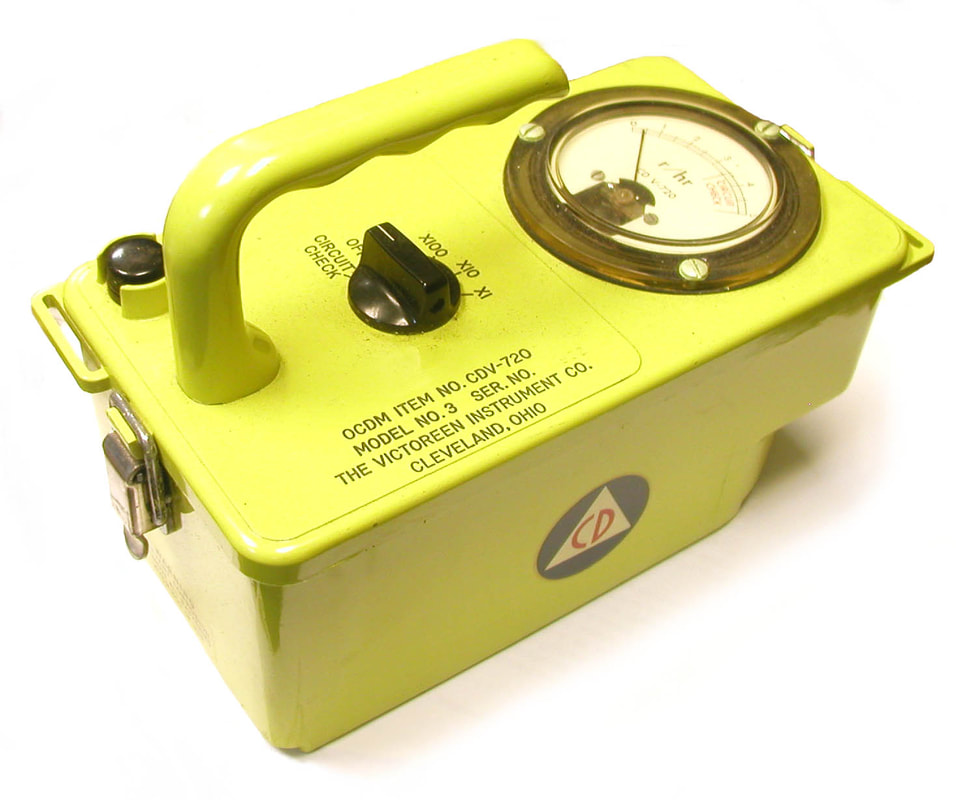
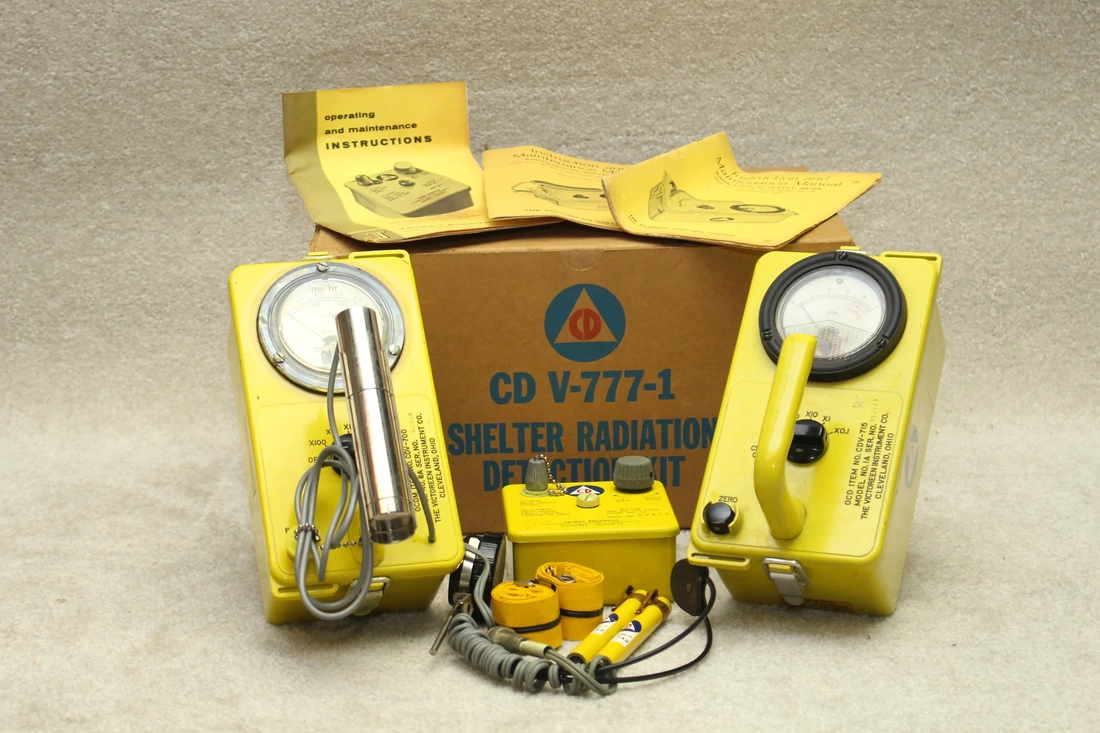
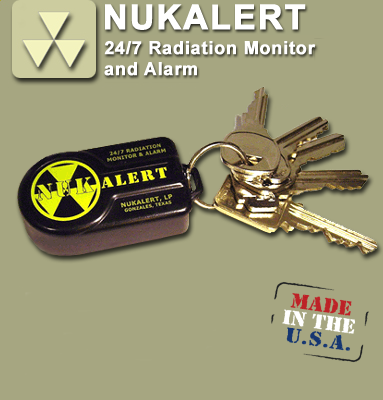
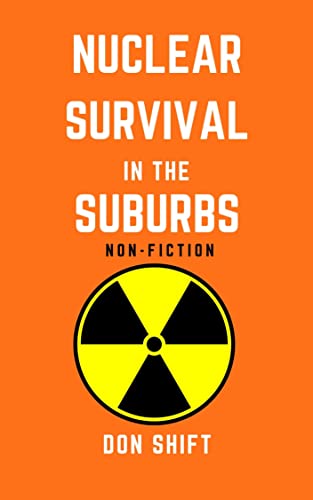
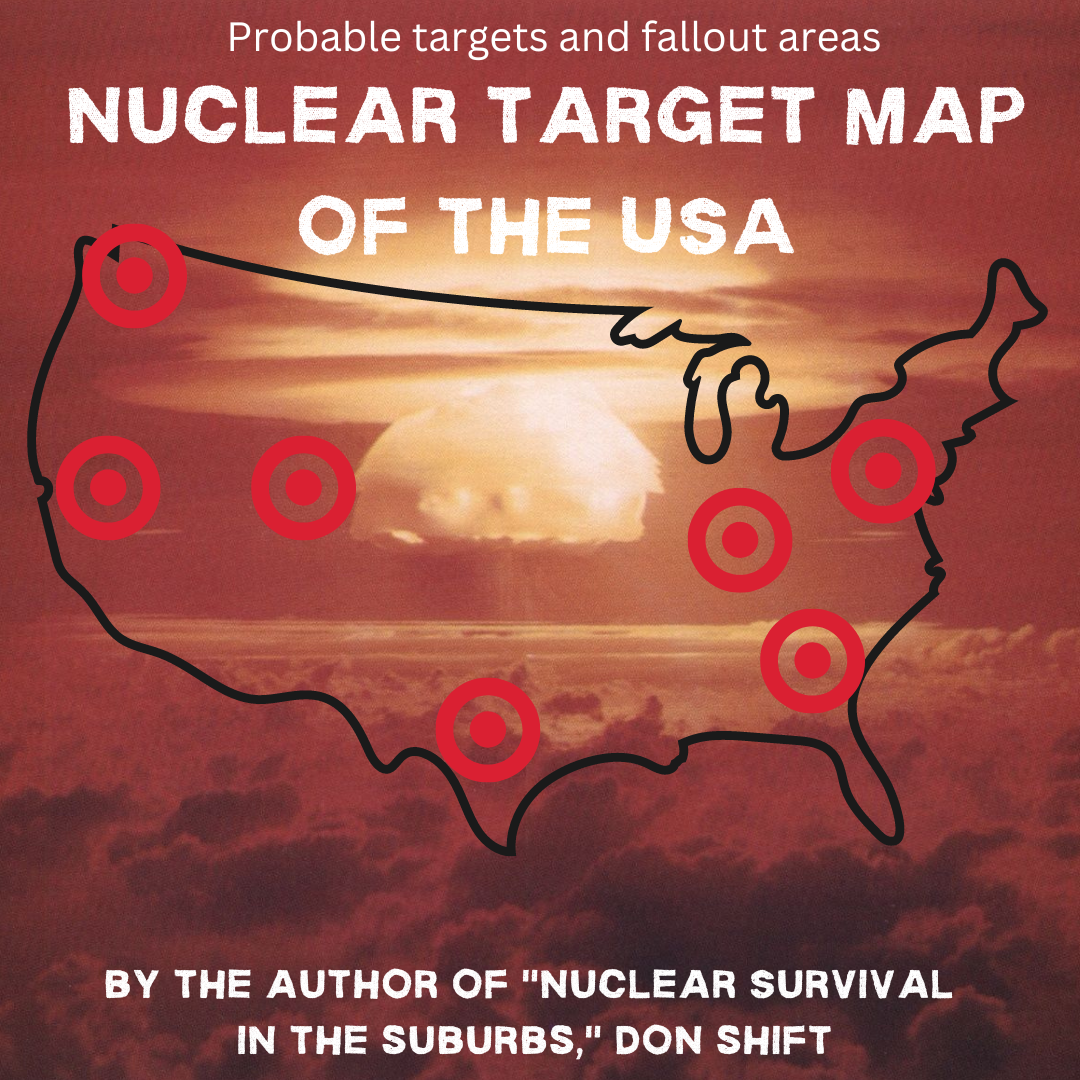
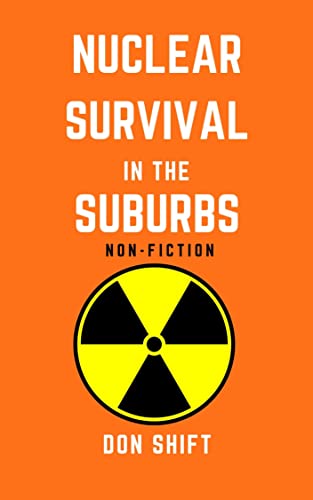
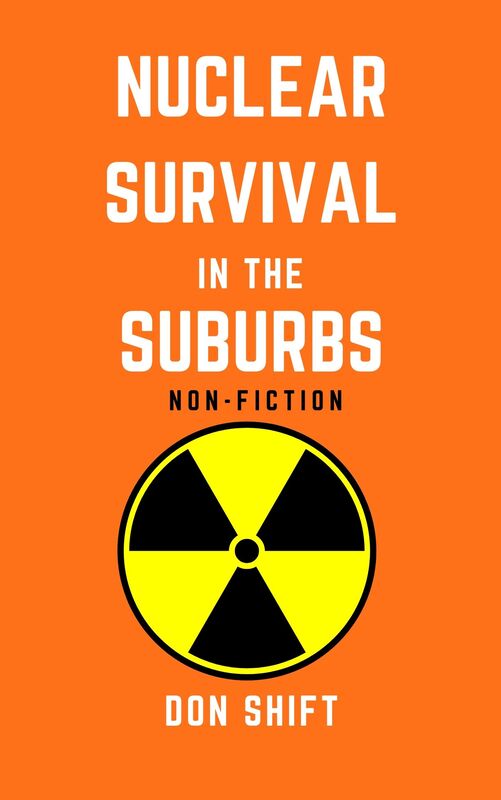
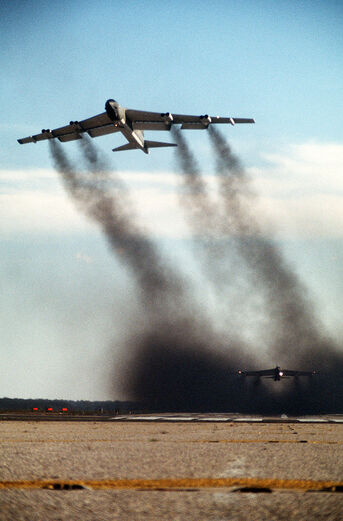
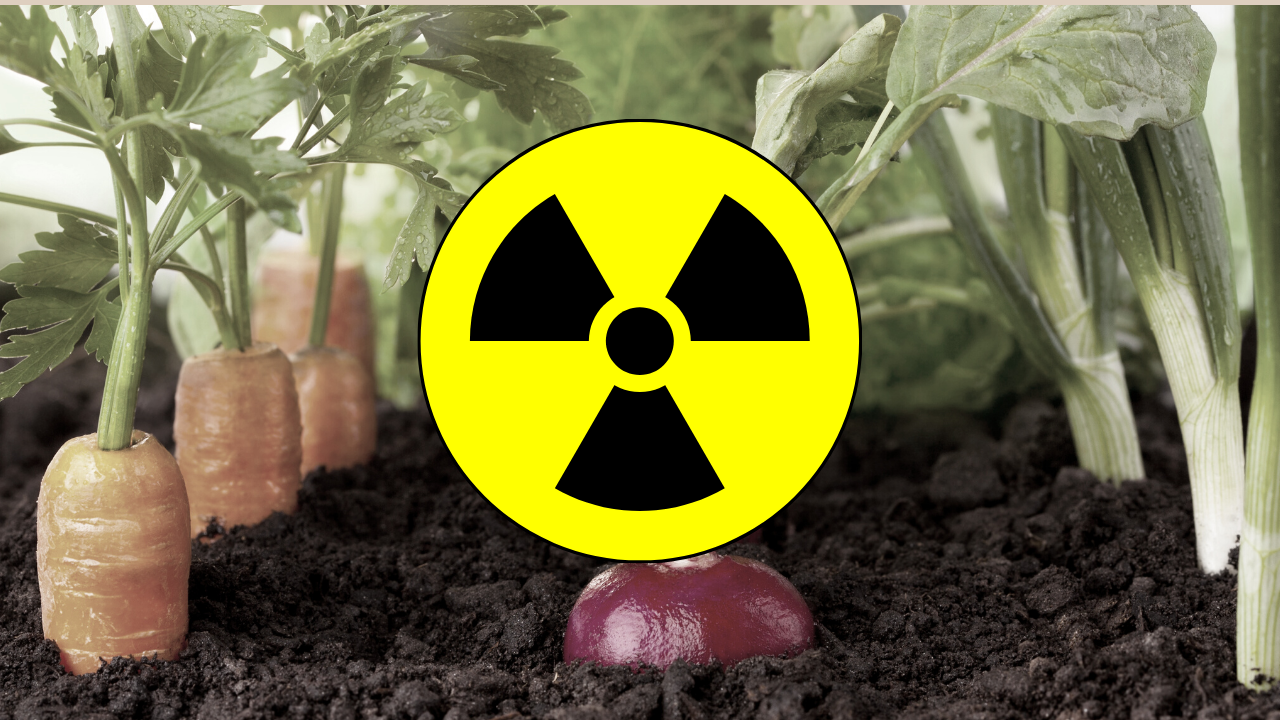
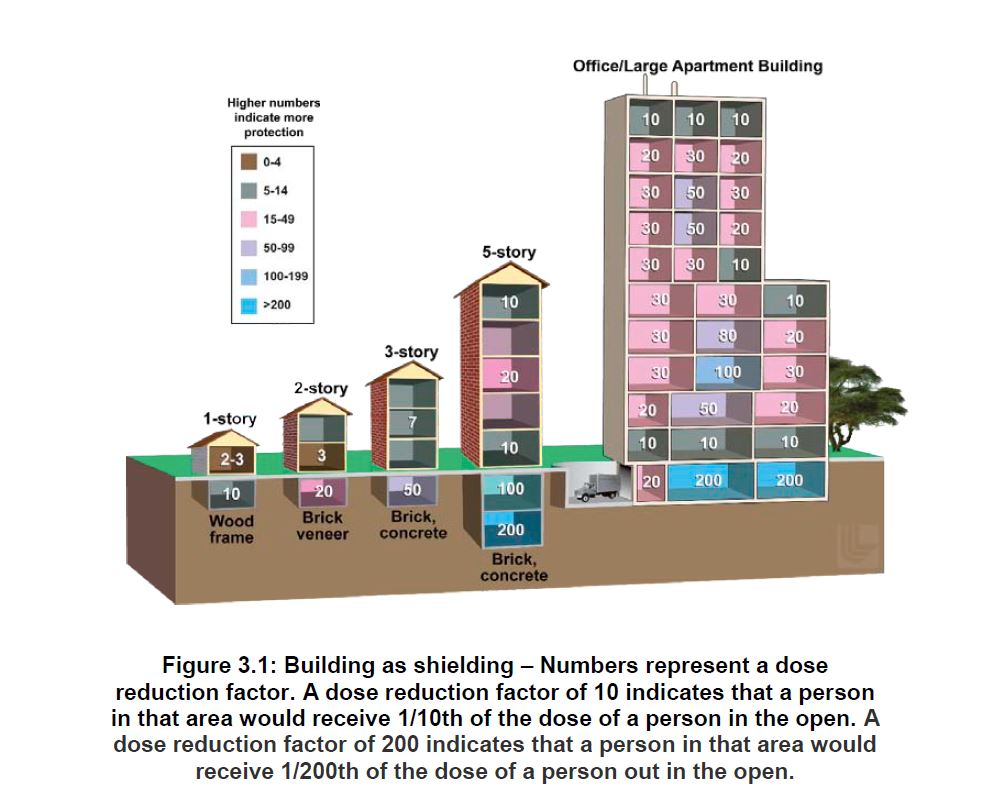
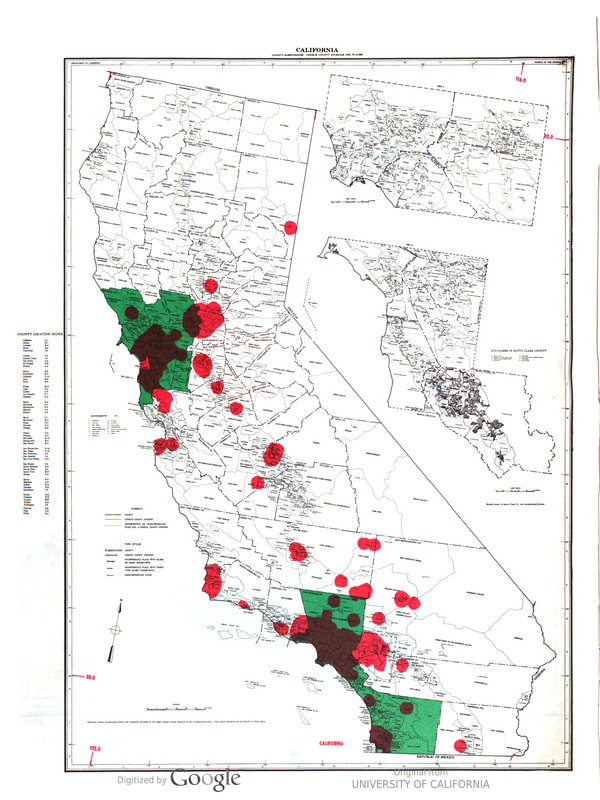
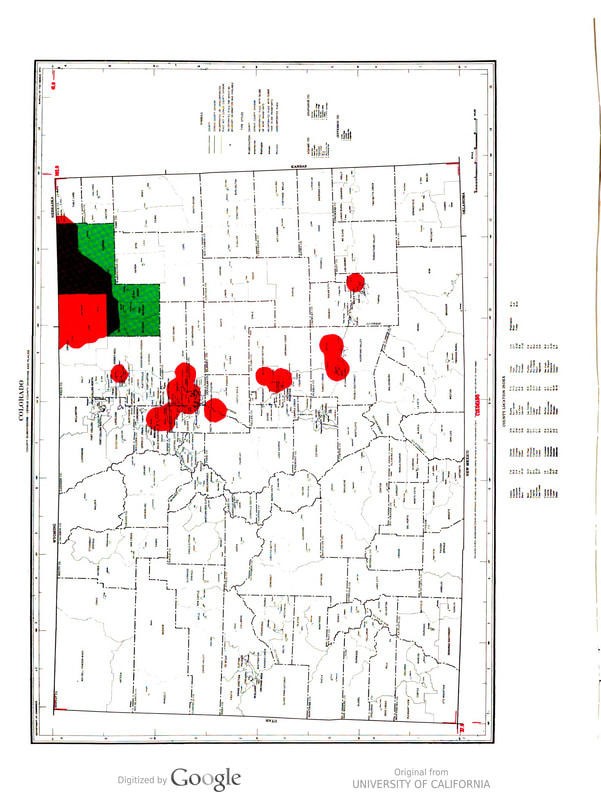

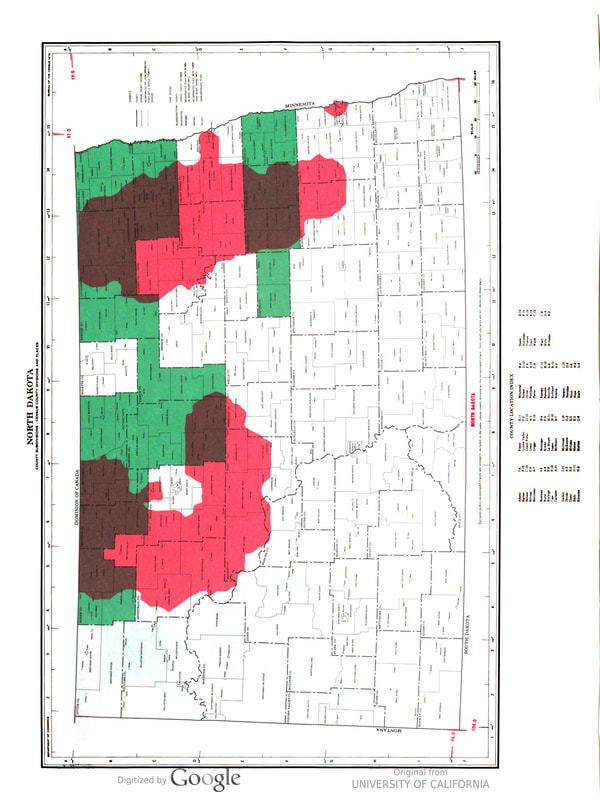
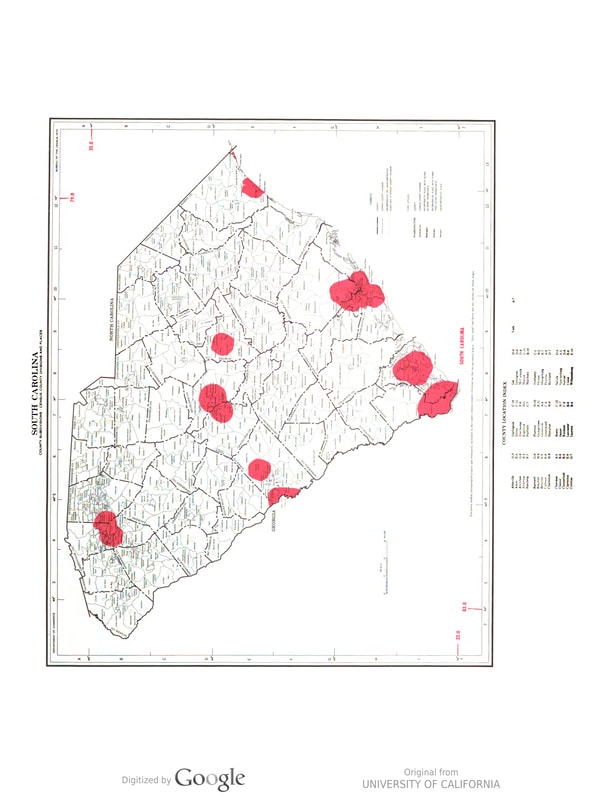
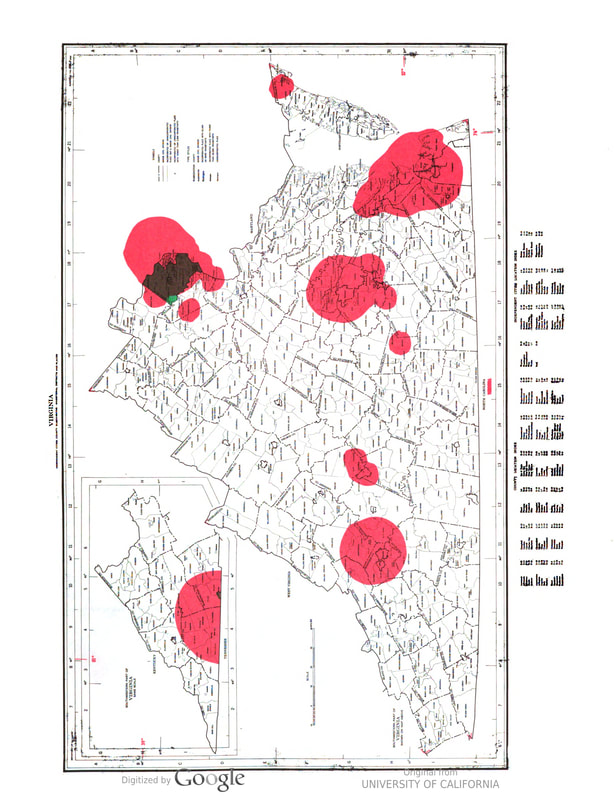
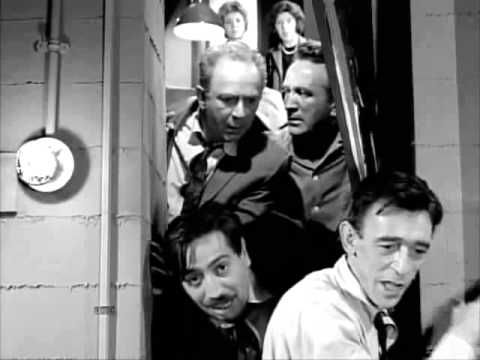
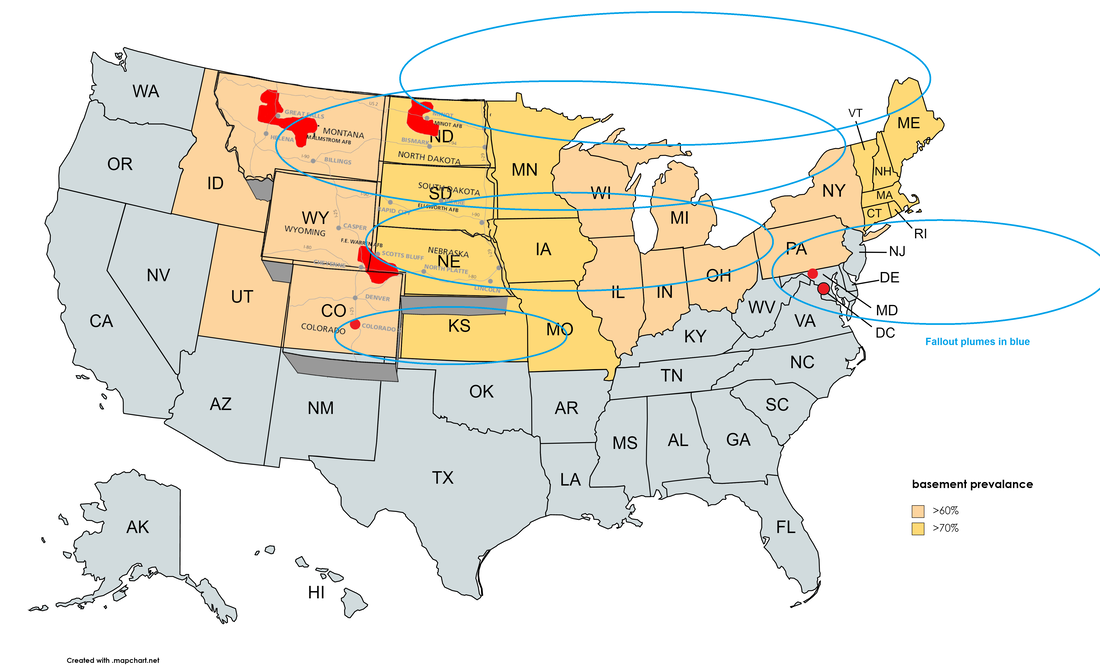
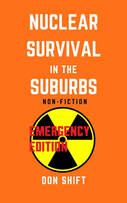
 RSS Feed
RSS Feed
